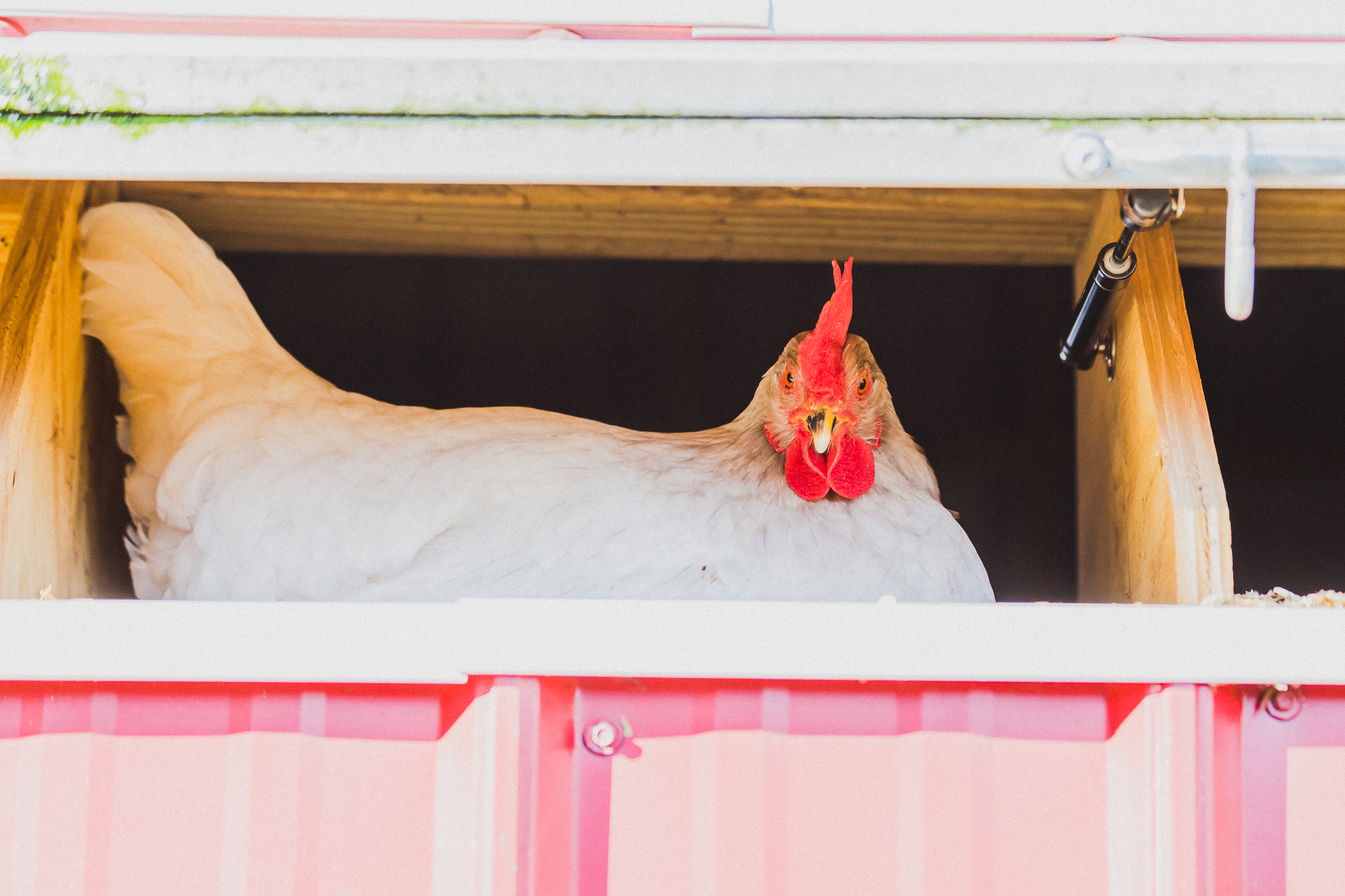With the cold weather officially here, the danger of frostbite rears its ugly head.
Frost bite occurs when moisture in the air freezes. This moisture tends to settle on the faces and combs of our chickens. As the chickens are sleeping, their breath is released, creating moisture in the air. Chickens with larger combs are more likely to get frostbite for the single reason that they have more unprotected surface area on their faces. Parts of the body covered in feathers are protected from the settling moisture. The freezing particles of water burn the skin and actually cause tissue damage. The affected tissue dies and turns black. If you start seeing black specks on the combs and wattles of your birds, it may be time to take preventive measures.
There are 3 simple steps you can do to prevent frostbite in your flock.
1. Move all water sources outside the roosting area.

Moisture is the enemy when it comes to frostbite. Please remove all water pans or poultry drinkers from the interior of the coop. Water molecules that evaporate, can collect in the air. This humid air then rests on the walls, perches, coop floor, and the chickens themselves, resulting in frostbite. I totally understand that cracking ice everyday is a nasty chore. Even though having your water in the coop lowers the chance of it freezing, it actually can be causing a bigger problem for your chickens. I suggest a heated water source outside the coop, perhaps in the run.
2. Provide ventilation inside the coop.
You want to keep your coop airtight and warm for your chickens, but if it is too airtight, this can actually lead to frostbite. When the chickens are huddled up, asleep, they release moisture from their breath. This moisture needs to escape. By leaving a small door to the run open, or by having a window with a screen on it, you can easily reduce dampness. There needs to be an equal balance of shelter and air flow inside the sleeping area.

3. Assemble roosts as high as possible.
Chickens love to roost as high as possible naturally to avoid predators. Roosting high also provides the added benefit of more warmth. Heat rises, and if the chickens are huddled up close together in a shelter with a roof, they are getting all the warmth possible. The warmer they are, the less chance of frostbite they encounter. Try staggering your roosting perches, with each perch getting higher each time. That way the chickens can easily jump from roost to roost, until they reach a comfortable height.
Treating Frostbite
Sometimes, despite efforts to prevent frostbite, some chickens will get it. Hens, and especially roosters, with large, upright combs are usually the first to be affected. If you have a chicken you particularity love, you can apply petroleum jelly to its comb at night.
If the comb becomes covered in black spots, I would suggest moving the bird to a temporary pen at night- that is much warmer. ( like a garage, garden shed, or barn). Antibiotics, such as topical sprays, should be applied to the frostbit areas for 4-5 days. Their comb may never be the same, but at least you can save the chicken and prevent further suffering.